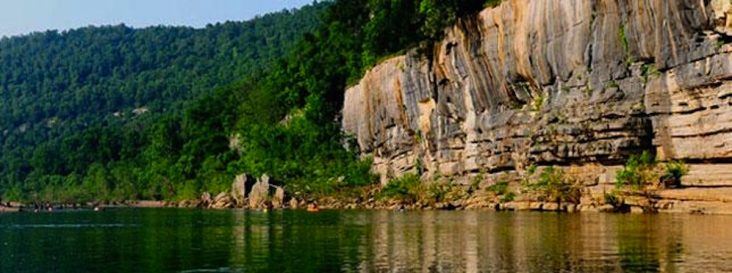Governor names agency heads to create Buffalo River plan, first report set for January 2018
by September 30, 2016 11:11 am 320 views

Gov. Asa Hutchinson on Friday (Sept. 30) appointed five agency heads to coordinate and create an action plan for protecting the Buffalo River, though he said it’s not a regulatory group.
Members of the group are the Arkansas Department of Environmental Quality’s Becky Keough, the Arkansas Natural Resources Commission’s Bruce Holland, Dr. Nate Smith with the Health Department, Kane Webb with the Arkansas Department of Parks and Tourism, and Wes Ward with the Department of Agriculture. Other agencies including the Game and Fish Commission will partner in the effort.
Designated in 1972 by President Richard Nixon as America’s first national river, the Buffalo National River travels freely for 135 miles and is one of the few remaining undammed rivers in the lower 48 states. Legislation creating the national river area was pushed by the late U.S. Rep. John Paul Hammerschmidt, R-Harrison.
The river watershed is home to over 300 species of fish, insects, freshwater mussels, and aquatic plants, including the endangered snuffbox mussel, the endangered Gray bat, and the endangered Indiana bat. A popular camping, canoeing, and fishing destination, the Buffalo National River attracts more than one million visitors a year.
In a memorandum written Sept. 30, Hutchinson said he was directing the five agencies to form the Beautiful Buffalo River Action Committee “to establish measurable objectives, set achievable action items, establish durable partnerships, share agency resources, and inform policymakers and the general public of relevant progress.”
In a press conference Friday, Hutchinson said the group would serve a coordinating, information-sharing role rather than acting as a regulatory body. The memo says the committee will create a forum for stakeholders to engage with each other and to partner with other state and federal agencies. It will create a watershed management plan funded through a one-time $107,000 grant from the federal Environmental Protection Agency. The committee is also tasked with identifying projects that would “jump start” improvements or maintain sustainability. Finally, it will consider current science and prioritize future research.
The group will meet at least quarterly. Its first annual report to the governor is due Jan. 31, 2018.
Hutchinson said he has received many letters about protecting the Buffalo River, whose watershed Holland said consists of 878,000 acres and 17,000 people.
Among the most controversial issues related to the watershed is C&H Hog Farms near Mt. Judea. Opponents of the farm – which is capable of housing 6,500 swine – fear waste runoff will pollute nearby Big Creek, a tributary of the Buffalo River six miles away.
ADEQ announced Thursday that field testing by Harbor Environmental and Safety was completed Sept. 26. Cascade Drilling drilled to a depth of 120 feet testing for hog waste-related pollutants in the soil and groundwater and then filled the hole with cement. Analysis will take about six weeks, with a final report from Harbor expected in January.
In August 2015, the Arkansas Pollution Control and Ecology Commission moved to bar any new permits for big swine factory farms on the Buffalo National River Watershed over the next five years. The new rule prohibits Arkansas Department of Environmental Quality from issuing new permits to operations confining more than 750 swine weighing over 55 pounds, or 3,000 swine weighing less than 55 pounds.
